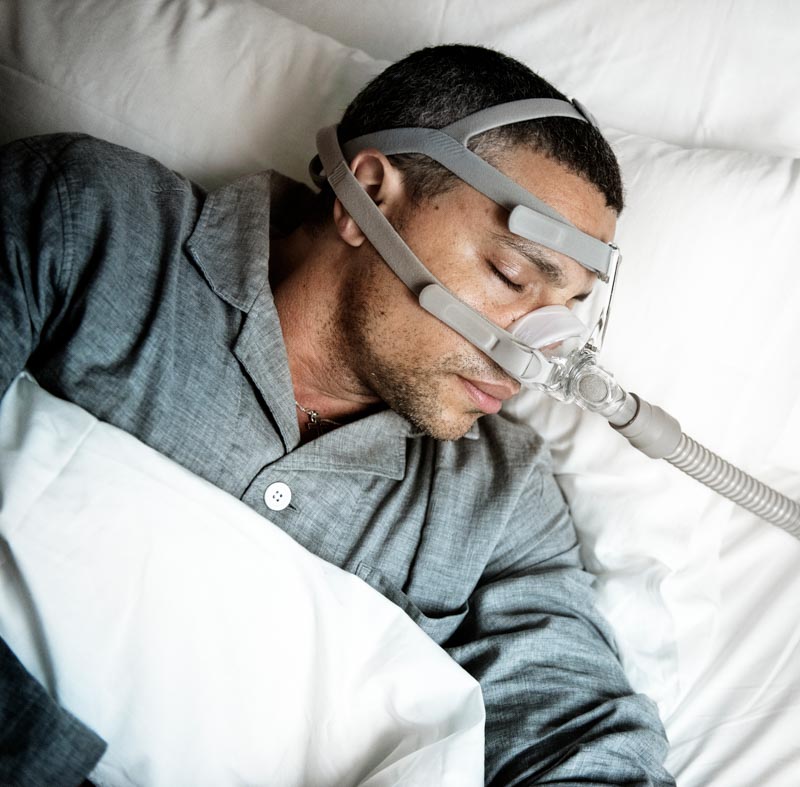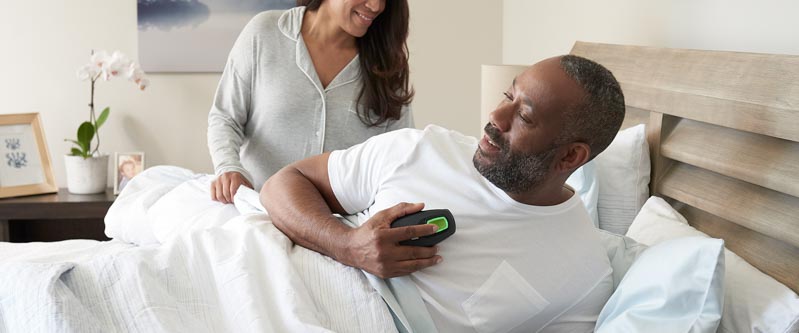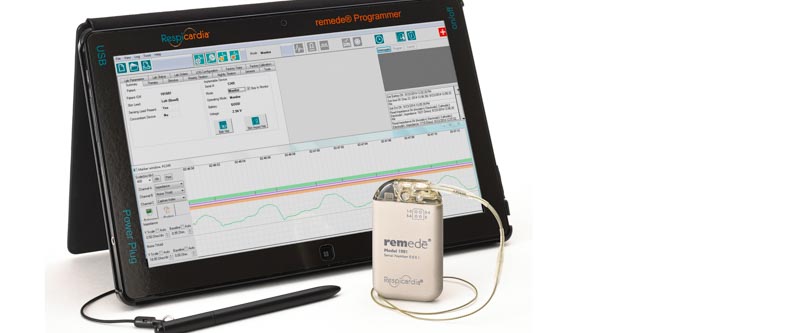Diagnosing and Treating Sleep Apnea in Arizona
The Insomnia and Sleep Institute of Arizona, with offices in Phoenix, Scottsdale and Gilbert, sets the standard in sleep medicine. Physician-owned and staffed, The Insomnia and Sleep Institute is much more than a sleep lab. Dr. Ruchir P. Patel founded the Insomnia and Sleep Institute of Arizona in 2013 with the idea of creating an outcome-driven sleep clinic committed to properly evaluating the patient’s sleep complaints to determine the next best steps. This could include further testing, if indicated, and therapeutic options. One of the most pressing sleep conditions affecting patients today is sleep apnea, with Obstructive Sleep Apnea (OSA) being the most common subtype.
What Is Sleep Apnea
Sleep apnea is a type of disorder that presents as repetitive pauses or a decrease in airflow during sleep. Sleep apnea can be primary (idiopathic) or secondary. In cases of secondary sleep apnea, causes include sources such as drugs or substances, other medical conditions, or issues such as high-altitude periodic breathing. Secondary breathing, such as Cheyne-Stokes breathing, can be present and is mostly associated with patients with a history of strokes and/or heart failure. Obstructive Sleep Apnea (OSA) is the most common type, but Central Sleep Apnea (CSA) is also diagnosed in patients. Treatment for sleep apnea depends on your specific condition and we encourage you to schedule a detailed evaluation today.
Sleep Apnea as a Common Disorder in the U.S
Obstructive sleep apnea is a relatively common disorder. Those with heart failure, hypertension, atrial fibrillation, stroke, diabetes mellitus type 2, etc are more prone to developing sleep apnea, and more men than women typically struggle with this disorder (except women entering menopause, who have an increased risk of sleep apnea). Also, older adults have a higher risk of experiencing of sleep apnea, and long-term opioid users also tend to be diagnosed with central sleep apnea more often.
There are many symptoms of sleep apnea and patients may experience any combination of these including excessive sleepiness during the day, snoring, or waking up abruptly in the night choking or gasping. Those who sleep with a partner may be told that they seem to stop breathing at night or have night sweats. Patients might wake up with a sore throat, dry mouth, or a headache. Mood swings, particularly depression and irritability, along with trouble concentrating can also be signs of sleep apnea.
Sleep Apnea and Links To Other Disorders
Sleep apnea can be coupled with other disorders or diseases, and these conditions may exacerbate one another. For example, obstructive sleep apnea has a strong connection to high blood pressure (hypertension) with up to 83% of patients being diagnosed with both diseases. The relation stems from a sudden oxygen drop during sleep apnea episodes increasing blood pressure. Obstructive sleep apnea is also capable of shifting the glucose metabolism, leading to insulin resistance and ultimately becoming a risk factor for type-2 diabetes mellitus. Sleep apnea and excess weight are closely intertwined, because sleep apnea can cause weight gain (as can any sleep disorder) but carrying extra weight also makes a person more likely to develop sleep apnea or may worsen sleep apnea. Lastly, studies have shown that obstructive sleep apnea increases the chance of heart failure by 140 percent, stroke risks by 60 percent, and coronary heart disease by 30 percent.
Sleep Apnea Treatments
CPAP Machine
The primary treatment for obstructive sleep apnea is a CPAP machine. CPAP stands for continuous positive airway pressure and it’s a therapy for treating OSA along with bi-level positive airway pressure (BiPAP). Either choice is used at night in the comfort of a patient’s home. These devices work by applying the necessary positive airway pressure needed to maintain the airways patent.

CPAP machines can greatly reduce the number of times a person stops breathing at night, which leads to less drowsiness during the day and overall improvement in quality of life. CPAP and Bi-PAP machines can be optimized to offer continuous or fixed breaths that mimic a person’s physiological breathing effort.
It’s important to note that a CPAP machine does not work for everyone, and that although many patients report immediate improvement in symptoms, results can take a few months to be fully appreciated. However, some patients remain uncomfortable with the CPAP machine even after trying it for weeks. These patients may be a better fit for a Bi-PAP machine that delivers help with inhalation as well as exhalation, providing a closer feel to our normal breathing pattern. Other common complaints include the CPAP device being uncomfortable, bulky, or loud, but the latest CPAP models are quieter and less cumbersome.

Inspire Implant for OSA
The Inspire Implant, also known as Inspire therapy, is an alternative treatment to the CPAP machine and requires no machine and no mouthpiece. It is an FDA-approved option for patients with moderate to severe OSA who’ve struggled to tolerate CPAP and Bi-PAP treatment options. Inspire Implants are surgically placed to monitor a person’s breathing, responding with just the right amount of stimulation to open the throat by moving the tongue forward and opening the soft palate to ensure the airway is open. It’s crucial that only Inspire-trained ENT surgeons place this technology so that optimal treatment results are achieved.
An ENT surgeon places this little stimulator beneath the skin located at the upper chest. One of the lead stimulators monitors breaths while the other (located right beside it) is in charge of stimulation when necessary. Inspire Implants are controlled by a small remote, which is turned on prior to sleep and turned off when the patient wakes up each day. Stimulation levels can be adjusted by your sleep doctor.

remedē System Implant for CSA
remedē System from Respicardia, Inc. is the latest breakthrough in implantable sleep apnea treatment for those with CSA. Similar to the Inspire Implant, it is also implanted below the skin during a minimally invasive procedure but it works by stimulating the phrenic nerve in the diaphragm (the muscle below the lungs) to control the breathing action. remedē System requires just one device, with two electrodes branching out to deliver therapy and to sense breaths. remedē System is continuous and automatic, designed to help restore proper sleep at night. No remote control is required since remedē System is fully automated and works when necessary on its own.
In addition to CPAP, Inspire Implant, and remedē System Implant therapies, oral appliance therapy is also an option for treating sleep apnea. It looks and feels much like an oral retainer and is considered a secondary device for treating sleep apnea. Patients interested in this approach can be referred to a provider.
Sleep Apnea Videos
Learn more about types of sleep apnea and treatments available.
Types of PAP Therapy
What Is Obstructive Sleep Apnea?
Inspire Implant for Obstructive Sleep Apnea
What Is Central Sleep Apnea?
remedē System Respicardia Implant for Central Sleep Apnea
Connect with The Insomnia and Sleep Institute for Sleep Apnea Treatment Today
So much more than a sleep lab, the Insomnia and Sleep Institute of Arizona is the leading sleep medicine center in Phoenix. Physician-owned and operated, all we do is sleep-centered medicine to help you sleep better. Contact us today to book a consultation.




